How Sinnerup improved Cost Per Purchase by 50% with Confect
May 21, 2023
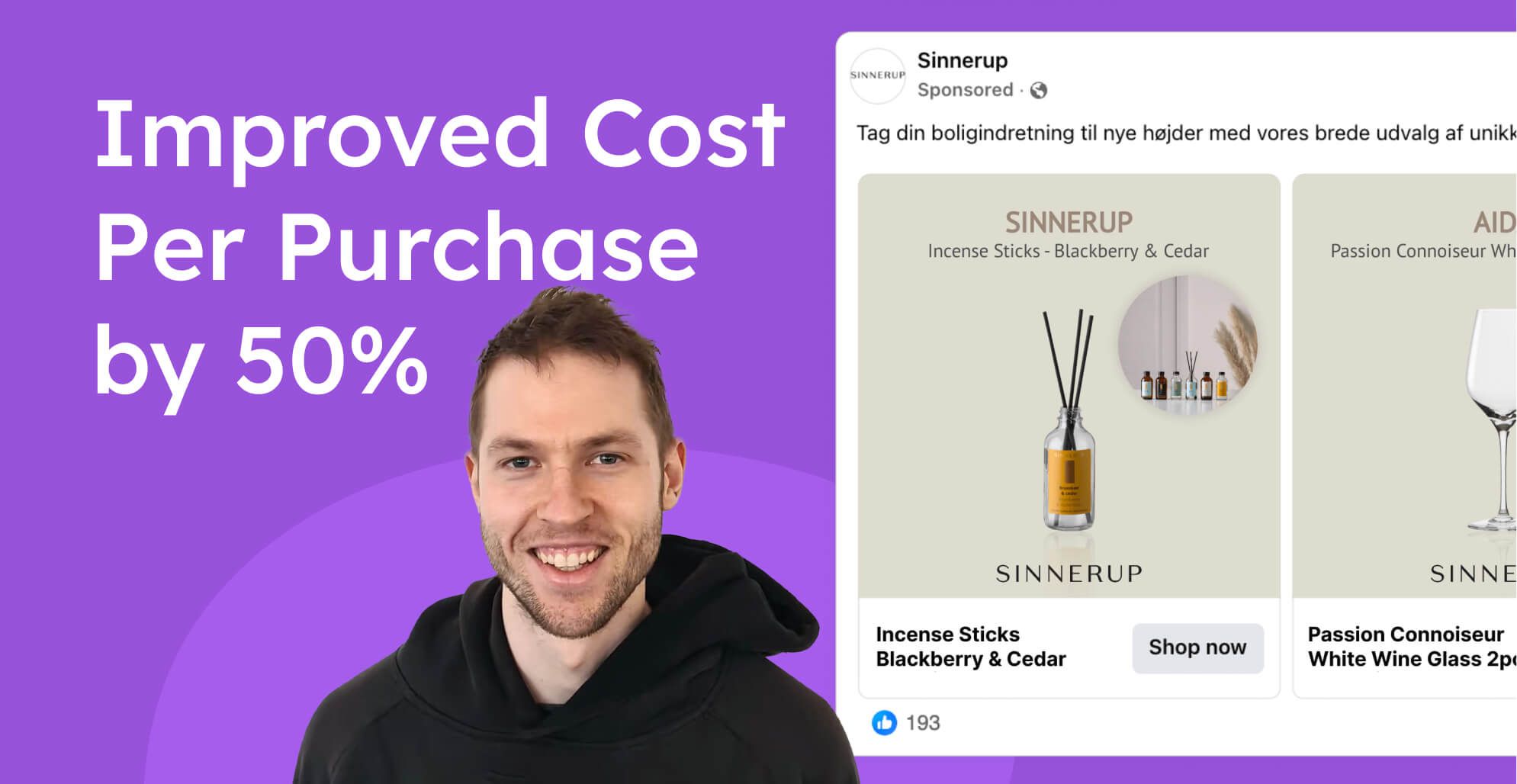
Sinnerup is a well-known Danish retail brand, offering furniture, interior design, and fashion across a wide network of stores throughout the country.
Like many eCommerce brands, their Catalog Ads on Meta started with the default setup: plain packshots on white backgrounds, with product names in the headline.
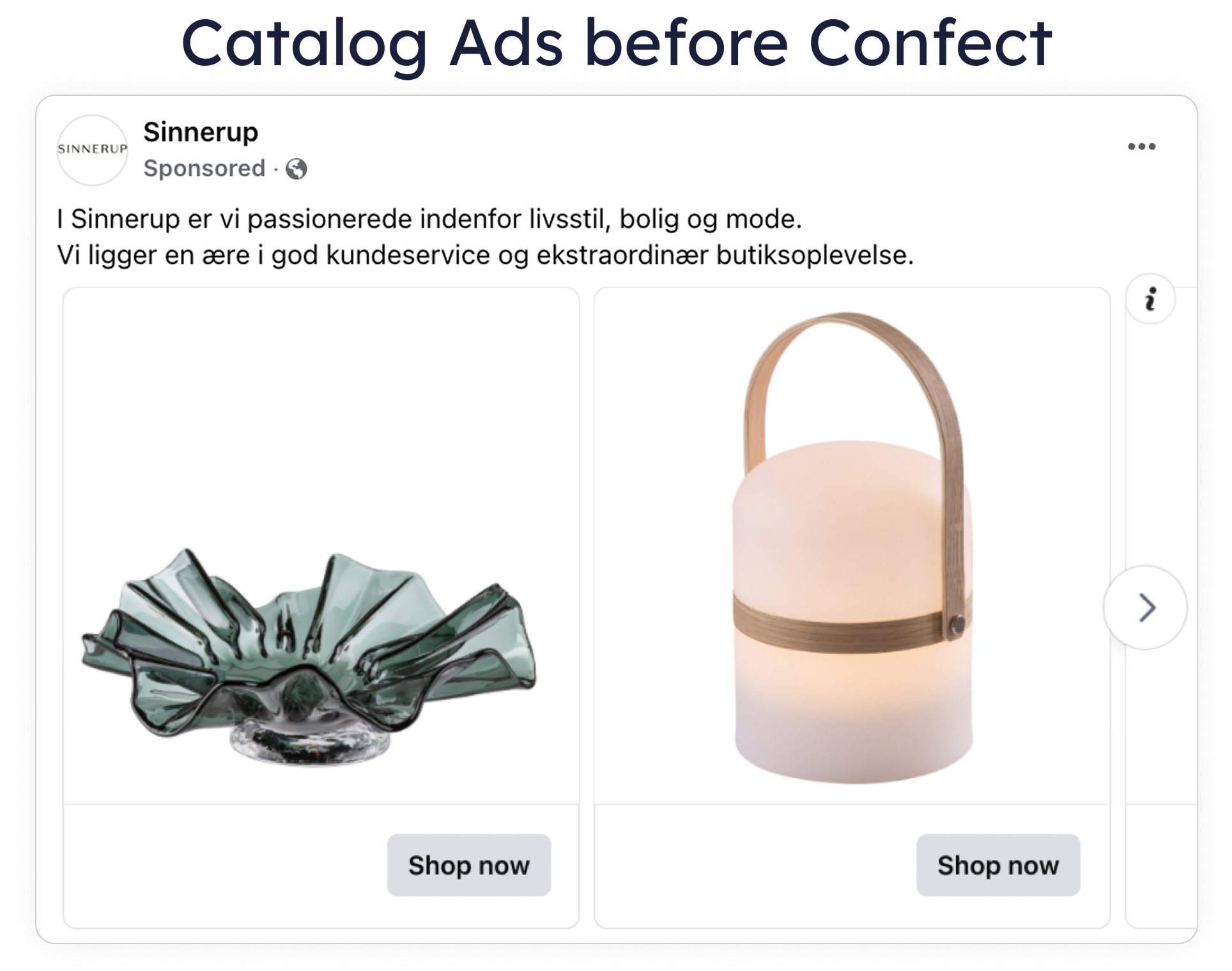
But that’s changed completely. Since implementing Confect, Sinnerup has built a high-performing Catalog Ads strategy that balances branding, performance, and automation.
From A/B testing and fully automated design updates to dynamic campaigns tied to stock levels, seasonal promotions, and membership offers their setup is now both smart and scalable.
We spoke with Jeppe S. Nielsen, Paid Social Responsible at Sinnerup, about how their team uses Confect for Catalog Ads.
Their results using Confect for their Catalog Ads
Improving performance of the always-on design
When Sinnerup first started using Confect, their Catalog Ads were simple packshots that blended into the feed. Their goal was to show their products in the best way possible and to prove that their new design would perform better.
To do this, they ran a series of A/B tests, starting with a baseline design: a branded background, logo at the top, large product image, and product name and price at the bottom.
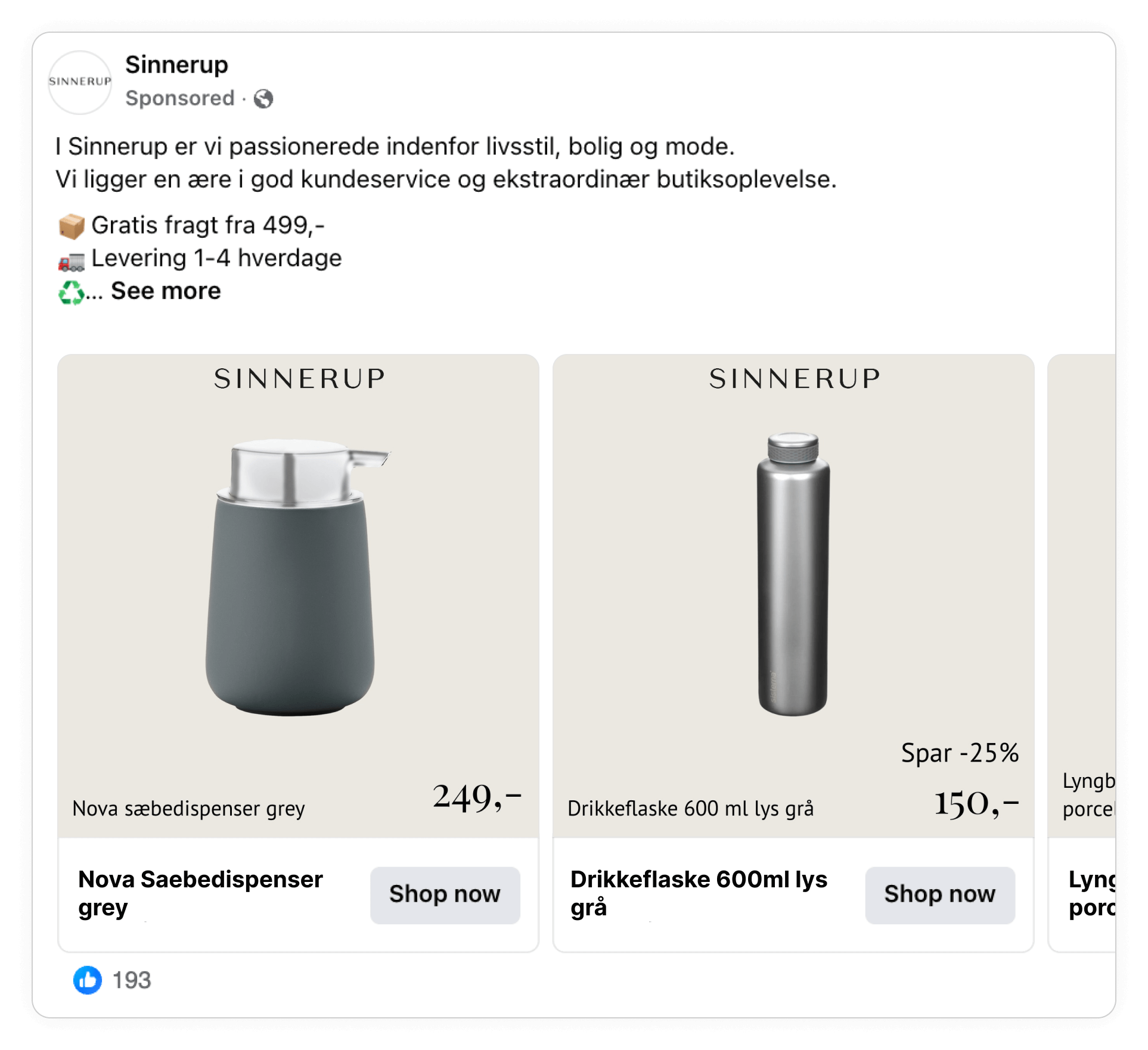
This was their “always-on” design used across campaigns and consistently structured to maintain branding. For discounted products, they added information about savings directly on the ad.
From there, they explored additional design elements to understand what actually made a difference in performance. One test focused on adding Trustpilot ratings to measure the impact of social proof. Another pulled in lifestyle images using extra image fields to help shoppers visualize the product in context.
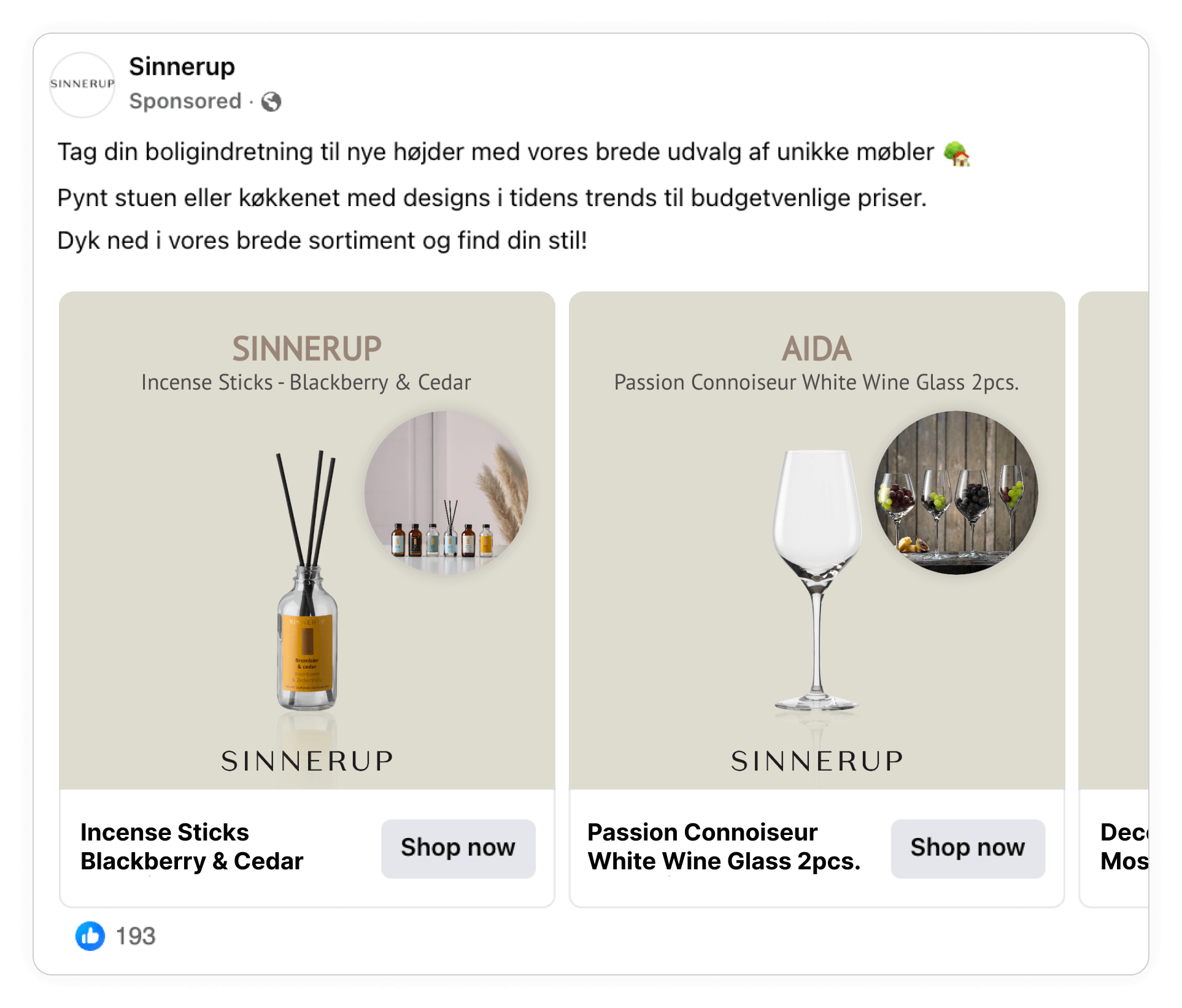
In this variation, they combined a clean product image with a lifestyle photo. The product image emphasized quality and detail, while the lifestyle image helped customers imagine how the product would look in their space.
Each test generated new insights, helping Sinnerup shape their catalog designs to balance branding with performance. Ultimately the simpler design without Trustpilot reviews or additional images performed better. They lowered their cost per acquisition by - 50% and increased their profit on ad spend by + 60%.
 Jeppe S. Nielsen
Paid Social Responsible @ Sinnerup
Jeppe S. Nielsen
Paid Social Responsible @ Sinnerup
Once they had a high-performing structure, they used it as a base for campaign-specific variations to add urgency for sales, highlight member-exclusive deals, or to promote seasonal offers.
They also applied these insights across channels. By adapting their top-performing Confect designs for email campaigns in Klaviyo, they created an on-brand creative system that drives performance beyond Meta ads.
This highlights the value of testing designs against each other to understand what works. Sinnerup continues to refine their always-on design using this method to ensure they’re always running the best-performing Catalog Ads.
Running seasonal campaigns in Catalog Ads
Sinnerup used to rebuild campaigns from scratch, which slowed their process down. Now, they use one flexible Catalog Ad design as the base of their seasonal campaigns.
It starts with their always-on Catalog Ad template: a branded background, logo placement, clear product imagery, and key information like price. This tested design (as seen in Use Case 1) serves as the backbone for their seasonal campaigns.
When a new season or holiday rolls around, like Black Friday, Valentine’s Day, or Christmas, Sinnerup simply builds on their existing design. They take the proven layout and adjust the styling to match the campaign theme.
For example, their Christmas ads use festive colors and small graphic details like stars to evoke the holiday spirit. For Black Friday, the design shifts to bold black-and-yellow tones, with a stronger emphasis on urgency and discount messaging.
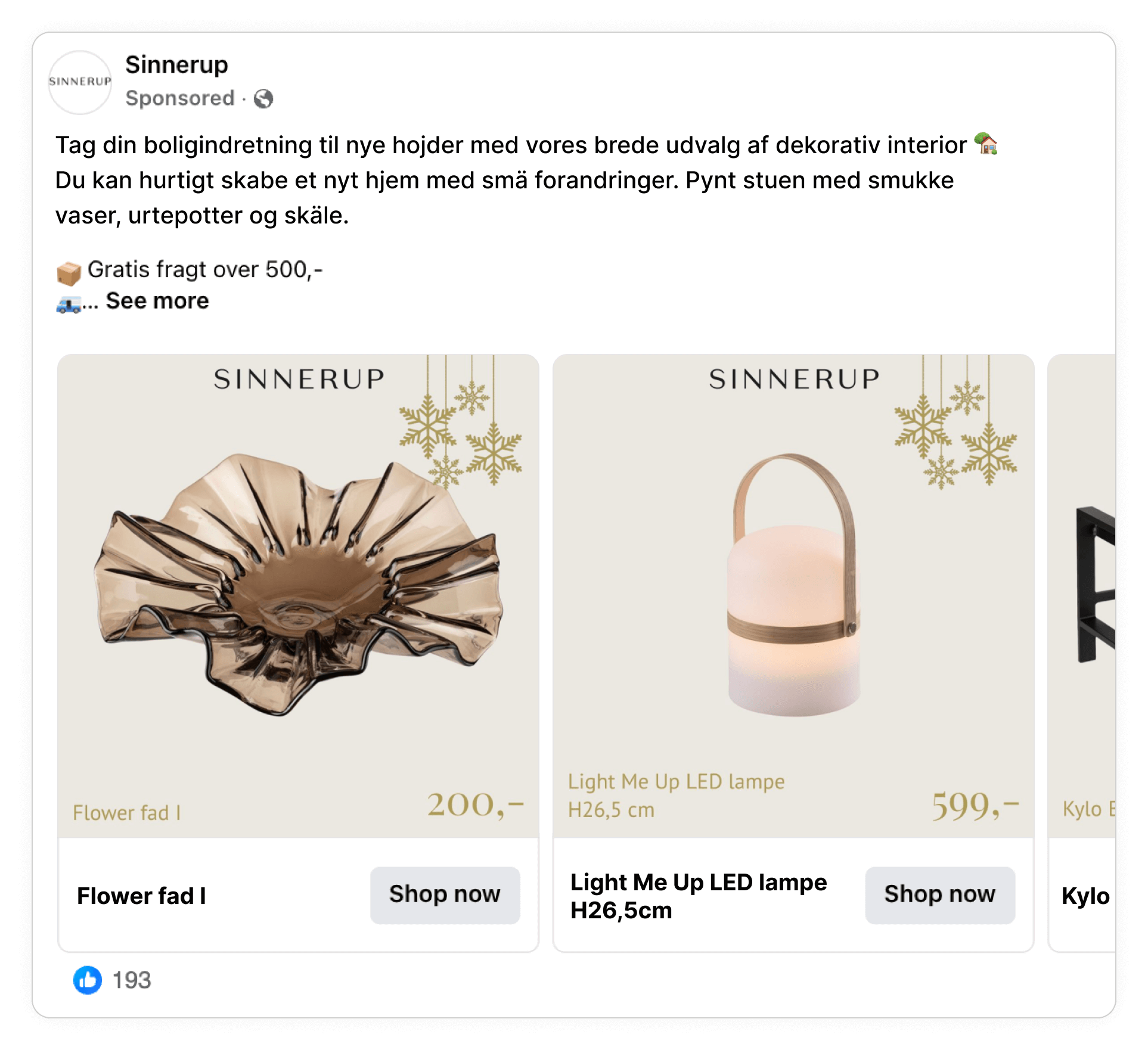
Instead of creating new designs from scratch, they update the template with campaign-specific styling. Then, Confect automatically applies it across the entire product catalog. It’s fast, scalable, and keeps creative quality high. Designers update one file. The system does the rest.
But perhaps the most powerful part of this setup is the automation.
Using Confect’s automated design rules, Sinnerup can schedule all their campaign creatives in advance. When the campaign begins, Confect automatically switches the design from the always on version to the campaign version, and once the campaign ends, it reverts back to the original template.
Campaigns update without restarting Meta’s learning phase. Since performance data stays intact, Sinnerup maintained strong, stable results that delivered +60% profit on ad spend.
 Jeppe S. Nielsen
Paid Social Responsible @ Sinnerup
Jeppe S. Nielsen
Paid Social Responsible @ Sinnerup
Creating urgency with real-time product info in ads
Without urgency signals like “low in stock,” Sinnerup was missing out on conversions. With Confect, they now automate urgency signals directly into their Catalog Ads, helping them to sell more.
By automating designs based on live product data, Sinnerup makes sure their ads always reflect real-time availability. A “Few left in stock” badge appears when products are about to sell out telling shoppers to act fast. And it works.
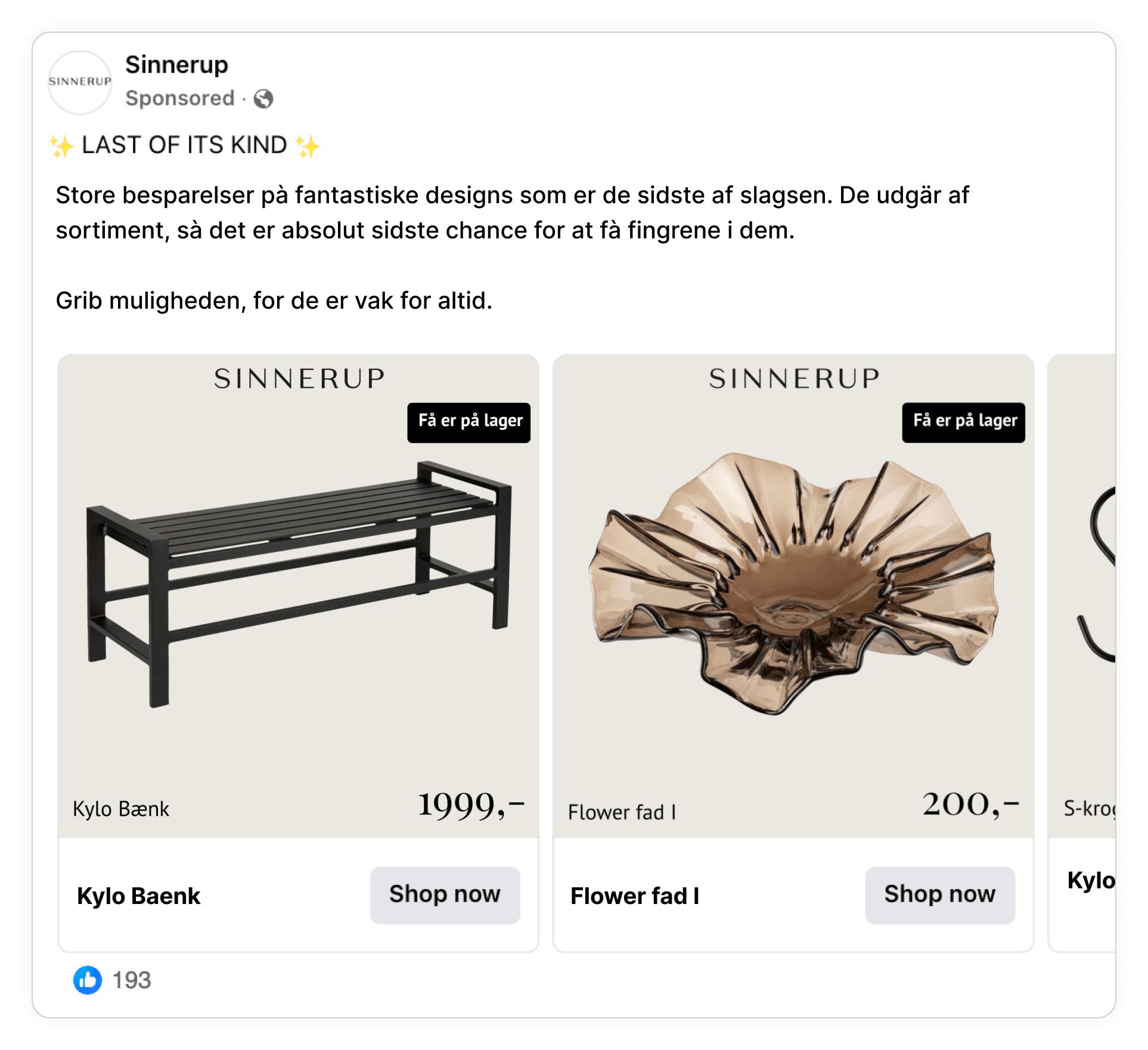
And it all runs in the background.
Their PIM system sends live stock data to Confect. Based on that data, Confect updates the ads automatically.
If stock runs low, the badge appears. If it sells out, the product is removed from ads within the hour. And when it's restocked, the badge disappears. No one has to update anything manually.
This kind of automation transforms what used to be a time-consuming, manual process into a scalable tactic that drives conversions.
And the results are even stronger when paired with campaigns. For example, during Black Friday, a product can show both a campaign-specific design and a low-stock badge at the same time, doubling down on urgency. The message is clear: this deal won’t last.
By connecting real-time stock data to ad design, Sinnerup makes sure their ads are always relevant and up to date.
This automation combined with urgency signals increased their conversion rate by +33%, as more shoppers acted faster and more decisively.
 Jeppe S. Nielsen
Paid Social Responsible @ Sinnerup
Jeppe S. Nielsen
Paid Social Responsible @ Sinnerup
Driving membership growth through Catalog Ads
Sinnerup’s members club offers exclusive prices, but without showing those perks in their ads, most shoppers didn’t know it existed. To fix this, they brought exclusivity directly into their Catalog Ads.
Their members club, available to anyone who signs up for the newsletter, includes special pricing and deals that regular shoppers can’t access. Now, shoppers can see those benefits in their ads, boosting conversions, re-engaging past customers, attracting new ones, and increasing profit on ad spend (by 60%!).
They tagged products with member-only deals in their feed. Then, Confect applied a special design: a clear “Member price” label and a branded badge that signals exclusivity.
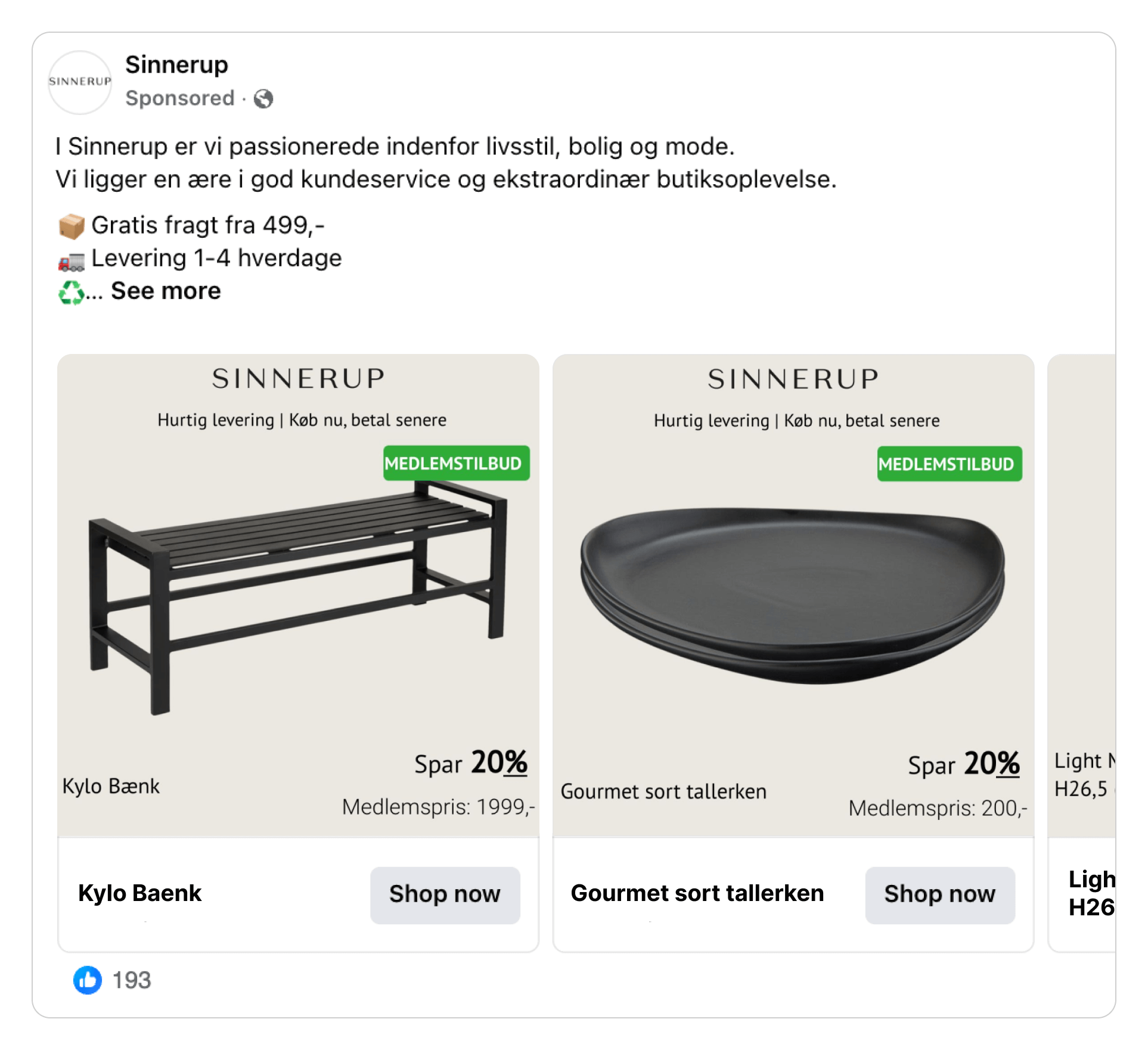
Sinnerup also uses them to attract new members by targeting broader audiences. When non-members see a great product with a clearly marked member-only price, it sparks curiosity and a sense of missing out. That emotional nudge can be just enough to convince them to join the club.
By turning their Catalog Ads into a membership growth engine, Sinnerup increased conversions, boosted profit on ad spend by 60%, and grew their customer base.
Conclusion
Sinnerup proves that Catalog Ads don’t have to be static. With the right setup, they can become one of the most flexible, performance-driven parts of a retailer’s marketing strategy. They started by testing what actually works; refining design elements like layout, messaging, and visuals to build a high-performing always-on.
By layering seasonal designs, like Christmas, on top of that proven base, they keep ads relevant without disrupting performance or wasting time..
What sets them apart is how they use real-time data to make each ad more relevant. Urgency signals like “Few left in stock.” Member-only pricing. All automated through Confect.
Sinnerup’s strategy is a guide for any eCommerce brand looking to increase performance, relevance, and efficiency of their Catalog Ads.
